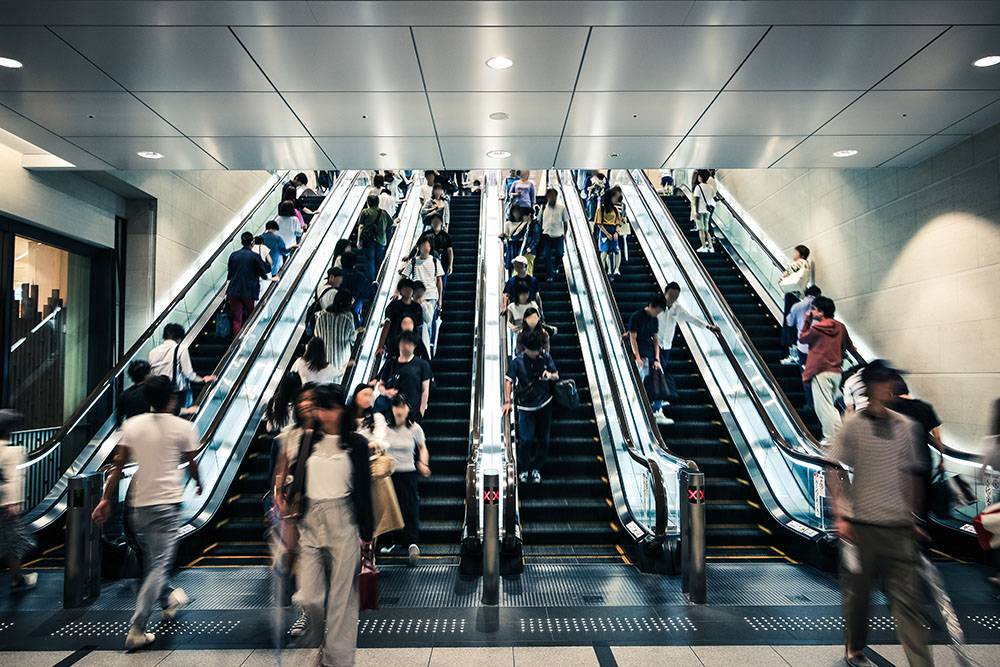
What to Do After Escalator or Elevator Accidents in Las Vegas, Nevada
 Riding escalators and elevators are a huge part of daily life in Las Vegas, so it’s no wonder that big cities like ours have higher rates of escalator and elevator accidents. These devices are present in just about every hotel, casino, retail store, and commercial office building you visit around Nevada, and they transport billions of people a year nationwide. These everyday contraptions are usually safe, but they can turn deadly when a property manager fails to maintain them, hires an unqualified individual to service them, or overlooks a dangerous defect.
Riding escalators and elevators are a huge part of daily life in Las Vegas, so it’s no wonder that big cities like ours have higher rates of escalator and elevator accidents. These devices are present in just about every hotel, casino, retail store, and commercial office building you visit around Nevada, and they transport billions of people a year nationwide. These everyday contraptions are usually safe, but they can turn deadly when a property manager fails to maintain them, hires an unqualified individual to service them, or overlooks a dangerous defect.
The US Bureau of Labor Statistics and the Consumer Product Safety Commission report that escalators and elevators kill about 30 people and injure 17,000 people annually in the United States. If you’ve been injured in an elevator or escalator accident due to the negligence of a building owner, contact Shook & Stone to pursue the compensation you deserve.
Common Causes of Elevator and Escalator Accidents
The cause of an elevator or escalator accident can sometimes be traced back to the manufacturer or designer flaws while other times, it can be pinned to the negligence of a building manager or maintenance team. Whether your accident was due to a mechanical breakdown or malfunction, a collapse, misalignment, or a failure to maintain, the individual who had a duty of care to protect patrons like you is liable for the injuries that resulted from their oversight.
Our Las Vegas-based personal injury team is there to help you identify who owed you a duty of care and breached it and to hold that individual or group of people responsible for your injuries.
Types of Accidents That Result From Faulty Elevators and Escalators
Elevator and escalator accidents can result in severe bodily harm. The following malfunctions commonly lead to electrocution, soft-tissue damage, cuts, muscle tears, broken bones, and brain injuries, to name a few:
- Door strikes: An elevator should be inspected twice a year to ensure that the door closes at a slow speed. If the door closes too fast, those hurrying into the elevator at the last minute risk being struck by the door because the sensors don’t have sufficient time to react.
- Escalator falling accidents: A stationary escalator is nothing more than a staircase, but an escalator in motion can be a huge hazard If the escalator should happen to stop abruptly, those on it could fall and break bones or strike their head.
- Snagging accidents: Escalators are especially dangerous for small children and people wearing loose clothing or high-heeled shoes. It’s far too easy to get hands, feet, pant legs, and skirts caught in the cracks and grooves.
- Tripping injuries: An elevator that is even 0.5 inches out of alignment in relation to the landing is a tripping hazard. Most building codes allow elevators to have no more than 1.25 inches of distance between the elevator and the landing to prevent clothing and shoes from getting snagged or stuck; any more space than this is a safety violation.
- Entrapment: Even when preventative maintenance is carried out regularly, an elevator may occasionally stop, trapping its occupants in-between floors. Facility managers are required to have an emergency evacuation plan in place in case this happens on their premises.
- Elevator falling accidents: An elevator must have maximum occupancy signs to indicate how many people it can handle at once without overloading. This simple preventative measure is an easy way to prevent falling accidents — which can be fatal.
What to Do After You’re Injured on an Elevator or Escalator
After being involved in an elevator or escalator accident in Las Vegas, the very first thing you should do is contact a personal injury lawyer at Shook & Stone. In order to seek damages for your injuries, you have to prove the negligence and liability of the responsible party — and you need an experienced team of personal injury attorneys on your side to succeed in this endeavor. As personal injury law specialists, we work to:
- Prove that the property owner or maintenance team had a duty of reasonable care.
- Prove that this duty of care was breached through an act of negligence.
- Prove that you suffered an injury as a direct result of this breach.
- Prove that your injury has resulted in lost income and other damages.
As soon as you contact us, our team can start to collect this proof through accident reports, service contracts, surveillance footage, maintenance records, security logs, personnel records, and any other documentation that supports your case.
Contact Shook & Stone for a Case Consultation
Having your freedom compromised by an accident that wasn’t your fault is frustrating and unfair. Some injuries leave you unable to work, drive, or even take care of yourself. We can’t undo the accident, but we can alleviate some of the financial burden associated with your medical bills. After an elevator or escalator accident, contact our personal injury team at Shook & Stone for a case evaluation. We’re excited to get to work on your claim and help you take back your life.
 Sunny
Sunny 4 Ways Technology Can Benefit Workers With Disabilities
4 Ways Technology Can Benefit Workers With Disabilities 